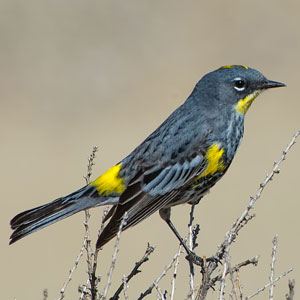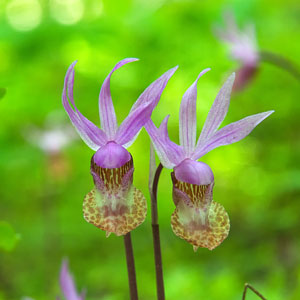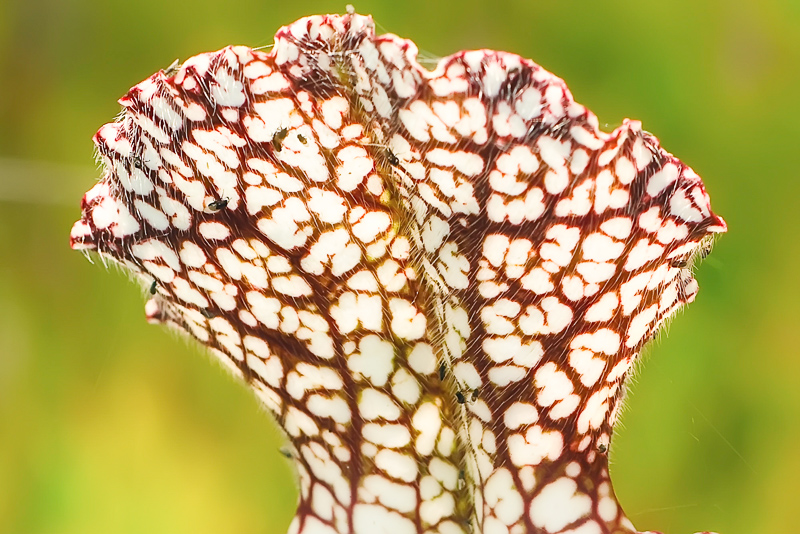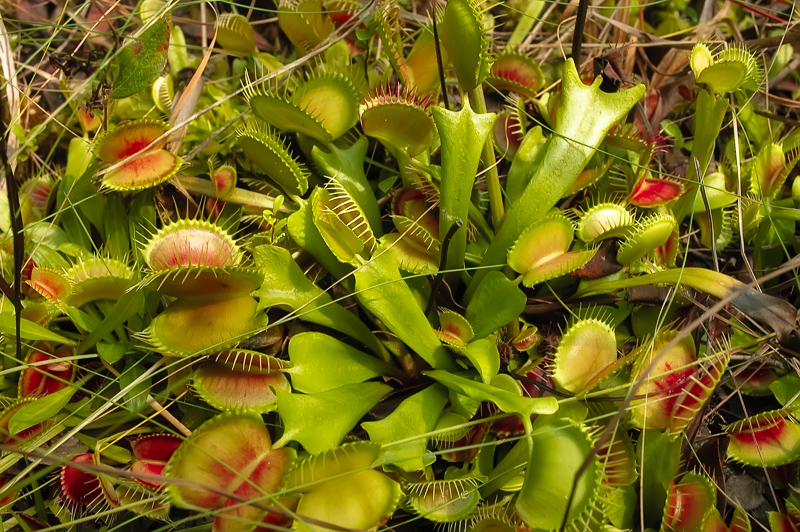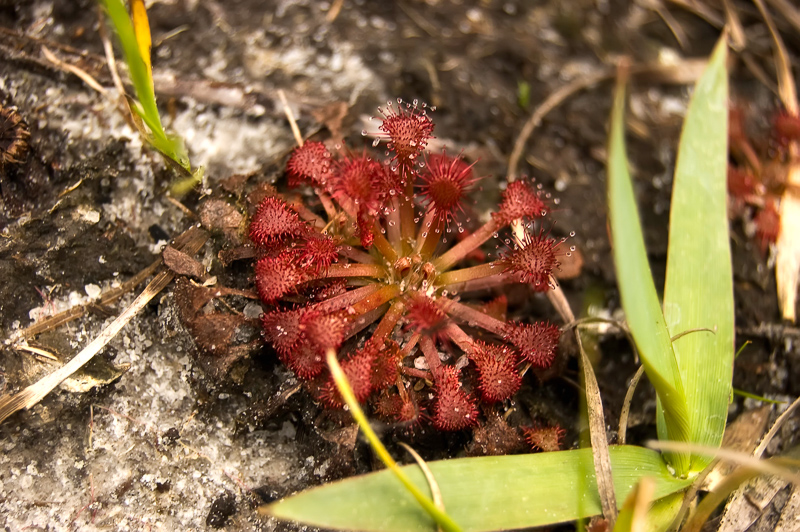Carnivorous Plants
Pitcher Plants
Known from scattered populations across North America from North Florida to Western Canada in areas with nutrient-poor soils, pitcher plants inspire every emotion from wonder to horror. Like all carnivorous plants, coloration and nectar glands attract insects where a series of hairs inside the pitcher (a modified leaf) encourages the insect downward into the tube until it cannot turn around and escape. From here, it will be digested slowly.
Venus Flytraps
As if the Venus flytrap needs an introduction…. this botanical marvel is straight out of science fiction…. or is it? Native to North and South Carolina, these infamous “meat-eaters” are spreading out of their home range in the Carolinas and into North Florida!
Bladderworts
Bladderworts are among the coolest and least – recognized of the carnivorous plants. Found on every continent of the world except for Antarctica, these freshwater-dependent plants have tiny basket or bladder-like structures with a sweet chemical attractant and trigger-like hairs that snap the door closed when tiny insects or aquatic wildlife approach the lure. Often seen as floating mats of vegetation, their flowers are very similar in appearance to snapdragons or some of our native orchids.
Butterworts
While not as popular as some of its other carnivorous cousins, the butterwort is a passive insect trapper with nine different species native to North America. Their basal, flat leaves are covered with sticky hairs that trap small insects that are digested with a cocktail of enzymes and acids that supplement their nutritional requirements, allowing them to live in habitats where competing plants cannot survive.
Sundews
Armed with tentacle-like appendages on their leaves that are covered in a sticky mix of sweet sugars, glue-like compounds and digestive enzymes, sundews are not only one of the most successful of the world’s carnivorous plants, they are also the most effective. When an insect or small animal comes in contact with its mistaken free meal, the leaf will wrap around its victim ensuring that it won’t escape.



